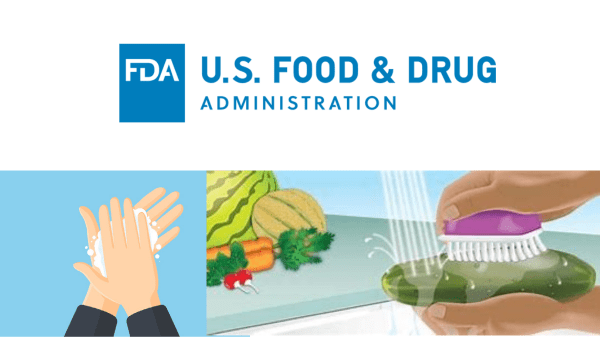SILVER SPRING, Md., June 6, 2023 /PRNewswire/ — Fruits and vegetables are an important part of a healthy diet, and especially delicious in the summertime. As temperatures rise, some germs that cause foodborne illness (also called food poisoning) multiply faster– making food safety even more important to keep in mind.
To keep produce and fresh-squeezed juices safe, the U.S. Food and Drug Administration says to follow these food safety tips:
Buy Right
- Purchase produce that is not bruised or damaged.
- When choosing pre-cut or fresh-cut produce (such as half a watermelon or bagged salad greens that have been cut), choose items that are refrigerated or on ice.
- Keep bagged produce separate from raw meat, poultry, and seafood in your cart and shopping bags.
Prepare Safely
- Cut away damaged or bruised areas on fresh fruits and vegetables before preparing and/or eating.
- Discard produce if it looks rotten or has an unpleasant smell.
- Cooking produce thoroughly kills harmful bacteria and reduces the risk of illness.
Wash Thoroughly
- Wash produce under running water before eating, cutting, or cooking, and dry with a clean cloth towel or paper towel.
- Washing can reduce disease-causing germs that may be present, but it will not eliminate them.
- Even if you plan to peel a fruit or vegetable, wash it first so dirt and disease-causing germs aren’t transferred from the outside to the inside.
- Scrub firm produce, such as melons and cucumbers, with a clean produce brush.
- For pre-packaged produce, read the label – if it says pre-washed and ready-to-eat, you can use it without further washing.
Prevent Cross Contamination
- Always wash hands before and after preparing food!
- Wash cutting boards, dishes, utensils, and countertops with soap and hot water between the preparation of raw meat, poultry, and seafood and the preparation of produce that won’t be cooked.
- When using plastic or non-porous cutting boards, wash them in the dishwasher after use.
Store Properly
- Keep perishable fresh-cut produce in a clean refrigerator at 40°F or below.
- In the refrigerator, place raw meat, poultry, and seafood on lower shelves of the refrigerator so their juices can’t leak onto produce.
- Always refrigerate produce that is bought pre-cut or peeled.
Check Your Juice
- Young children, older adults, pregnant people, and people with weakened immune systems (such as transplant patients and individuals with HIV/AIDS, cancer, or diabetes) risk serious illnesses or even death from drinking juices that haven’t been pasteurized or otherwise treated to control disease-causing germs.
- Look for pasteurized or otherwise treated products in your grocers’ refrigerated sections, frozen food cases, or in non-refrigerated containers, such as juice boxes, bottles, or cans.
- Untreated juices sold in refrigerated cases of grocery or health food stores, cider mills, and farmers’ markets must contain a warning label showing that the product has not been pasteurized. Warning labels are not required for juice or cider that is fresh-squeezed and sold by the glass. If you are unsure if a juice product is pasteurized – be sure to ask!



